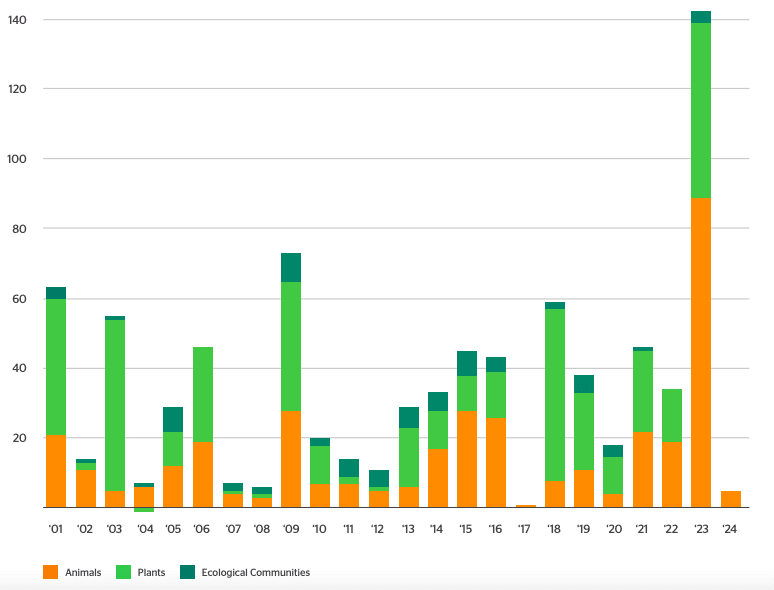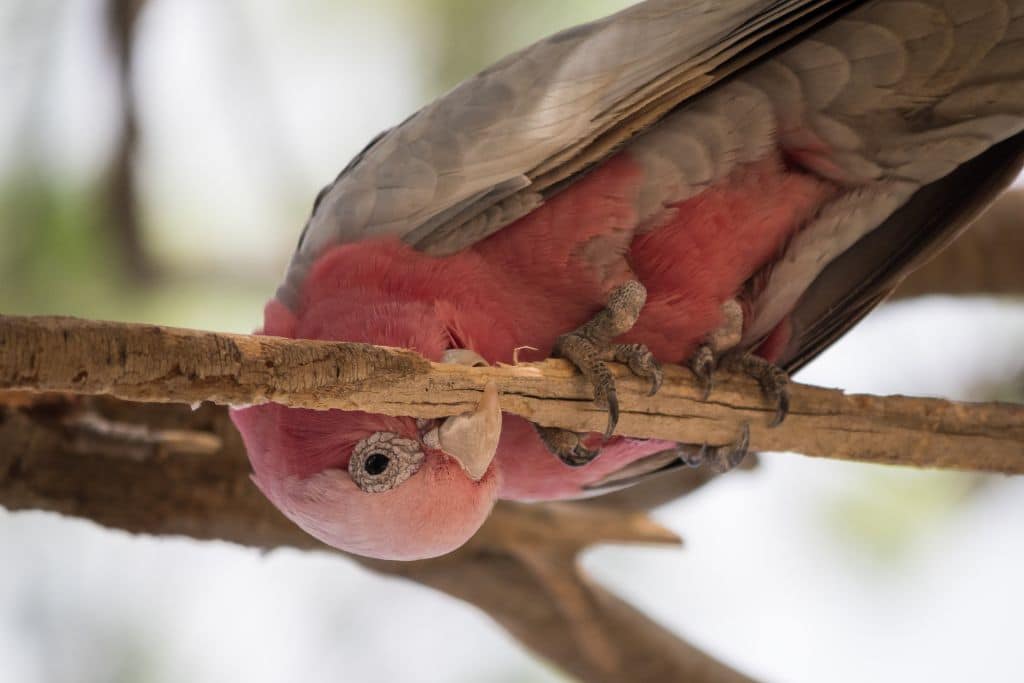A total of 2,212 ecological communities, plants, and animal species are now threatened with extinction in Australia, owing to climate change and government-backed climate destruction, according to a new report published Monday.
—
2023 was another harsh year for Australia’s wildlife, with dozens of new species on the brink of extinction as a result of the destruction of huge swaths of land.
A total of 144 animals, plants, and ecological communities were added to the national list of threatened wildlife last year, the highest number since the list was established in 1999 and five times more than the yearly average, according to a new report monitoring nature destruction in the country.
Among the newly-listed threatened animal species are 24 reptiles and crustaceans, respectively, 19 fish, 13 birds, six frogs, three insects, and one earthworm. The list also includes 51 new plants and three ecological communities in southwestern and southeastern Australia. 11 species were uplisted, meaning they are now believed to be even closer to extinction.

Government Failure
The Australian Conservation Foundation (ACF), which is behind the analysis, argues that a combination of climate change-fuelled extreme weather events and government-backed habitat destruction, estimated at around 10,426 hectares (25,800 acres) in 2023, are behind the rising number of new threatened species. The country has one of the worst extinction rates in the world, and it is getting worse.
Last year, a report monitoring the state of Australia’s environment suggested that at least 19 of the country’s ecosystems are showing signs of collapse or near collapse due to climate change, invasive species, pollution, and other human interventions.
“The Environment Protection and Biodiversity Conservation Act (1999) is barely monitored, rarely enforced and full of loopholes that allow businesses to destroy nature,” Monday’s report read. Indeed, a previous ACF assessment found that land clearing in the country is often approved without previous evaluations of the potential impacts under national environment laws. Of this unregulated clearing, over 90% is for agricultural land, predominantly for beef production, which injects an estimated $8.4 billion into the Australian economy. But new fossil fuel projects also contribute to deforestation. Last year, the government approved four new gas and new coal projects, respectively, as well as dozens of variations to existing fossil fuel projects under national nature laws.
“Every species that was added to the threatened species list last year deserves protection because every creature and plant plays an important role in sustaining the web of life,” said ACF’s nature campaigner Peta Bulling. “We urge Environment Minister Tanya Plibersek to make sure the reform of the national environment law deals with the problem of habitat destruction, which keeps pushing unique and much-loved Australian species towards extinction.”
The Role of Climate Change
Undoubtedly, the rapidly worsening climate crisis is also a huge contributing factor to Australia’s deteriorating wildlife and ecosystems.
In the last five years, the country has experienced record-breaking droughts, bushfires, and floods. The intensity and frequency of these extreme weather events are unprecedented and are set to further rise with increasing global warming, not just in Australia but all over the world, as the latest Intergovernmental Panel on Climate Change (IPCC) assessment warned.
Speaking on ABC News on Monday, Bulling explained that a lot of the species added to the list last year were directly impacted by the Black Summer bushfires, a historic wildfire season that affected New South Wales and Queensland in southeastern Australia between 2019 and 2020, burning 42 million acres, destroying thousands of buildings, and killing dozens of people and about 3 billion animals.
“When we think about it, we know that we’re feeling the impacts of climate change now. These sort of extreme weather events will become more frequent, so we really need to be investing in resilient ecosystems to give them the best chance possible of pushing through this extraordinary period that we’re about to experience,” she said.
You might also like: 10 of the Most Endangered Species in Australia In Dire Need of Protection


















